How to Make VR Video From Normal Video – Creating VR videos from regular videos may seem daunting, but with the right tools and techniques, it’s possible to convert 2D footage into an immersive 360-degree experience. This article will guide you through transforming your regular video content into captivating VR experiences.early finder
1. Assess Your Source Material
Before you begin, it’s essential to evaluate your source material. Not all 2D videos can be transformed into VR effectively. Consider whether your video content would benefit from a 360-degree perspective and whether the subject matter is suited for an immersive experience. Additionally, high-quality footage with high resolution and a wide field of view will yield better results.
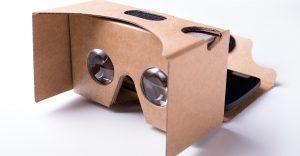
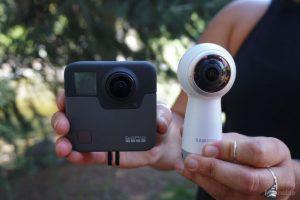
Read Also: 2 Methods to Combine Videos on iPhone
2. Choose the Right Software
To convert your 2D video into VR, you’ll need specialized software. Some popular options include:
- Adobe After Effects: A versatile video editing tool with various VR and 360-degree video effects.
- Mettle SkyBox Studio: A plugin for Adobe After Effects explicitly designed for creating and editing 360-degree videos.
- Mistika VR: A professional-grade VR post-production software that supports stitching, stabilization, and 2D to 3D conversion.VR Video From Normal Video
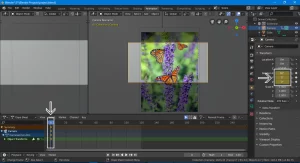
3. Prepare Your Footage
Before you begin the conversion process, it’s essential to prepare your footage:
- Trim and edit your video to ensure a straightforward narrative and smooth transitions.
- Correct color grading, lighting, and stabilization issues to enhance the overall quality.

4. Convert 2D To 3D
To create a more immersive VR experience, you can convert your 2D video into stereoscopic 3D. This process involves creating two slightly offset views of the original video, one for each eye, to give the perception of depth. Adobe After Effects and Mistika VR offer tools for achieving this effect.

Read Also: Sandbox VR Promo Codes and Coupons 2023
5. Wrap the Video in a 360-Degree Environment.
Next, you’ll need to wrap your 2D video in a 360-degree environment to create the illusion of a VR video. Use your chosen software to map the video onto a sphere or a 360-degree panoramic background. Remember that the background qualities of the content of your video will significantly impact the final result.
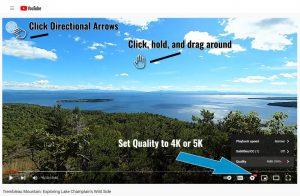
6. Add Interactivity (Optional)
To enhance the immersive experience, you can add interactive elements to your VR video, such as hotspots, gaze-based triggers, or spatial audio. This step is optional but can significantly improve user engagement.

7. Export Your VR Video
Once you’ve completed the conversion process, export your VR video using the appropriate settings:
- Choose a compatible video format, such as MP4 with H.264 or VP9 codecs.
- Select a high resolution to ensure the best VR experience, ideally 4K or higher.
- Export the video as stereoscopic 3D, if applicable.
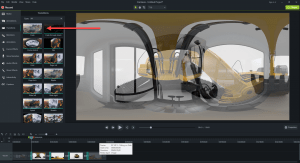
8. Upload Your VR Video to a Platform
Upload your VR video to a platform that supports 360-degree content, like Yo, like Facebook. Follow the platform-specific guidelines for uploading VR videos, and ensure you tag your video as ‘360’ or ‘VR’ to indicate that it’s a VR experience.

Read Also: 4 Methods to Loop a Video on iPhone Easily
Converting Normal Videos to VR Online: A Comprehensive Guide
Virtual Reality (VR) has revolutionized how we show visual content, offering an immersive and engaging experience. With the popularity of VR headsets and devices, more people are interested in converting traditional 2D videos into VR experiences. Fortunately, several online tools and platforms make this process easy and efficient.
Step 1: Choose the Right Online Video Converter
Selecting a reliable and user-friendly online video converter is crucial for a seamless conversion process. Some of the top online video converters include:
- Kolor Eyes Converter (now GoPro VR Player)
- VRConvert
- Wonda VR
- InstaVR
These tools offer different features and capabilities, so reviewing each and choosing the best and essential.
Step 2: Upload Your Video
Once you select the online video converter, upload your regular video to the platform. Most converters support a variety of video formats, including MP4, AVI, MOV, and WMV. It’s essential to ensure that your video is in a supported format before uploading it for conversion.
Step 3: Configure VR Settings
After uploading your video, you will need to configure the VR settings. This may include selecting the VR format (180-degree or 360-degree), specifying the output format (e.g., side-by-side or top-bottom), and choosing the video resolution. Some converters also allow you to adjust the field of view, orientation, and other VR-specific parameters to optimize the immersive experience.
Step 4: Convert Your Video
Once you’ve configured the VR settings, initiate the conversion process. Depending on the size and resolution of your video, this may take a few minutes to several hours. During this time, the converter will process your video, apply the selected VR settings, and generate a new VR-compatible video file.
Read Also: 4 Methods to see blocked messages on iPhone
Step 5: Preview and Download Your VR Video
After the conversion, preview your newly created VR video to ensure the quality and settings meet your expectations. If you’re satisfied with the result, download the VR video file to your computer or device. If not, you may need to adjust the settings and repeat the conversion process.
Step 6: Enjoy Your VR Video
Finally, transfer your VR video to your VR headset or device, and immerse yourself in the virtual reality experience. Different devices may have specific requirements for VR video playback, so consult your device’s user manual for guidance.
Conclusion
While converting a regular video into a VR video can be challenging, the process can breathe new life into your content and provide viewers with a unique, immersive experience. Using the right software and following the steps outlined in this guide, you can transform your 2D videos into captivating VR experiences that will engage and inspire your audience.
Read Also: 4 Steps to Unblock on Snapchat
Share This Post:





